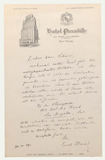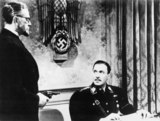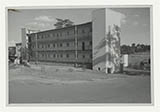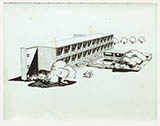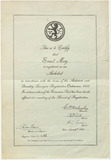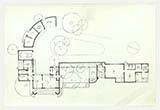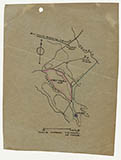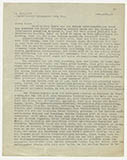Ernst Krenek: Lamentatio for mixed choir (1940/1941)
A composition after the Lamentations of JeremiahThe composer Ernst Krenek recalls the period from 1940 to 1941 when he composed Lamentatio. The high complexity of the work is an expression of the gloomy circumstances Krenek found himself in during his exile in the United States: the composer was deeply convinced that there was no solution to the personal and social dilemmas around him.
Ernst Krenek: Letter to Eric Schaal (30 November 1937)
Ernst Krenek arrived in New York on 17 October 1937 to accompany the Salzburg Opera Guild on tour. It was the composer’s first time in the USA.
Ernst Lubitsch: To Be Or Not To Be (1942)
Two years after Charlie Chaplin’s very successful satire The Great Dictator (first German showing 1958), the famous director Ernst Lubitsch filmed his intelligent comedy To Be Or Not To Be in 1942 (first German showing 1960).
Ernst May: "Delamare Flats" residential complex (plans 1938-39)
"Frankfurt kitchen" in KenyaOne year after registering as an architect in Kenya Ernst May won the contract to design a residential complex in Nairobi. The so-called "Delamare Flats" were intended as attractive blocks of flats for Europeans living in Kenya.
Ernst May: Aga Khan girls' school in Kisumu (1949)
In 1949, Ernst May took on a construction project for the Ismaili religious community in his East African exile. He was charged with building a girls' school for the community in Kisumu on Lake Victoria.
Ernst May: certificate of registration as an architect in Kenya (1937)
Under the sign of the compasses againThree years after his emigration from German to Africa Ernst May, took an important step towards returning to his earlier vocation. On 30 June 1937 Kenya's Chamber of Architects and Surveyors confirmed his registration as an architect in the country with this certificate.
Ernst May: Floor plan of the house he designed himself near Nairobi (1936-37 and 1946)
A house opposite the Ngong hillsAfter a number of years as a farmer in Tanzania, Ernst May returned to his former career as an architect in Nairobi, Kenya. One of his first construction projects was designing a home for himself and his family.
Ernst May: Hook-on-slab building prototype (c. 1945)
Prefabricated houses for AfricaIn his Kenyan exile, Ernst May wanted to be an architect, but not only for wealthy Europeans or significant clients. Even in his Frankfurt years, affordable housing for lower income groups had been a concern of his.
Ernst May: Layout of his farm in Tanzania (c. 1934)
From urban planner to farm ownerUpon arriving in Tanganyika (now Tanzania) Ernst May was not able to start work immediately as an architect and urban planner. In the first years of their exile, May, his wife and their two sons lived the life of farmers.
Ernst May: Letter to his wife from British internment (1942)
Imprisonment and a new beginningThe Second World War arrived in East Africa in the summer of 1940. Thereupon Britain interned German citizens in its East African colonies.


